J109 One Design Sails
Here at Ultimate Sails we’ve been designing race winning sails for the J109 ever since the first boat was launched in France in the early 2000s. During that time we’ve worked with the designers and best sailors in the class to help maximise the boats performance through developments in sails and rig tuning. There’s not much we don’t know about what makes a J109 perform and how to help our customers get to the front of the fleet!. Our J109 sails have helped owners to win the Commodores Cup, Spi Ouest, the National Championships, Cowes Week, The Spring Series, The Winter Series, the J109 class in the Fastnet race and the RORC Channel Challenge Cup.
The key to great One Design sails in any class is achieving a good balance between shape retaining strength and the forgiving easy-to-trim feel needed to keep the boat going fast across the wind range. Our ongoing design and development programme for the J109 class has produced faster, longer lasting and more cost effective sails which have always shown great all round performance and durability.
Mainsail Design Considerations
All upwind sails need to work together to increase the performance of the overall sail plan. So the change to non overlapping Jibs has also led to a refinement in the mainsail design to suit the more efficient but smaller headsails. The mainsail now has a more powerful and twisted shape which reduces heel and makes it easier to trim – very important with the now much narrower sheeting angle of the headsails. We’ve also tweaked the yarn layouts to help support the aerodynamic shape of the sail over the full range of backstay tensions.
Class Mainsail
Lightwave Platinum Membrane
Surface type: Filament array (Taffeta option)
Fibre type: Carbon / Black Aramid
Fibre DPI: 16000
Wind range: 0 – 35 kts true
Standard Features
- Top full length batten
- Tapered leech battens
- Laminated batten pockets
- Sail bag
- Cunningham
- Vectran leech and foot lines
- Trim stripes
- Laminated patches
- Sail numbers
- Tell tales
- Velcro clew strop
- Class logo
- Race measurement
- Class reef
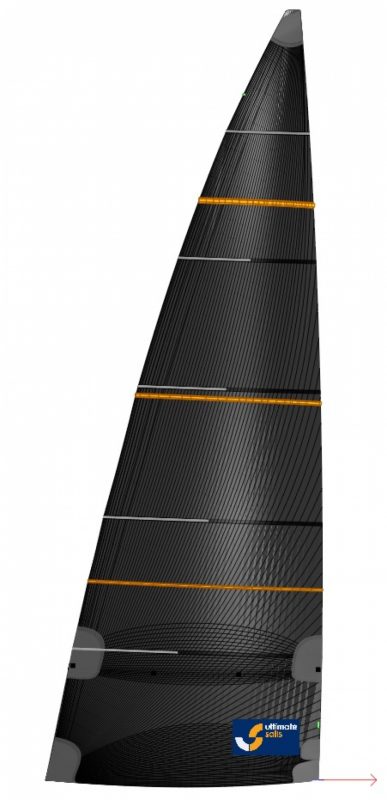
Headsails Design Considerations
The opportunity to remove the furler reduces a significant performance sapping factor called the ‘end plate effect’. This is where the aerodynamic efficiency of a sail is reduced whenever there is a gap between the foot of the sail and the deck allowing air to escape underneath. J/109 headsails set on the furler usually don’t have enough foot round and the result is a gap between the sail and the deck and a less efficient sail – where the air is literally “sucked” out of the sail plan. All Ultimate Sails J1s, J2s and J3s are designed with the foot touching the deck / coachroof which forces the air to travel up over the sailplan at all times and gives a resultant increase in performance. Scientific tests have shown that the aerodynamic efficiency of a sailplan can be increased (approx 5% – 7%) when the gap between the foot of the sail and the deck is closed. You can really feel the difference when accelerating out of a tack, get into a tacking battle with anyone using our latest headsail designs and there will only be one winner! All the Class headsails have powerful shapes which make the boat easy to steer. We’ve also increased the fibre content (DPI) to help them hold their shape at the top of the wind range and widen the windspeed range which each sail is efficient. Another key design feature is the optimised leech profile which ensures the sails can be sheeted properly around the D1s and the spreaders.
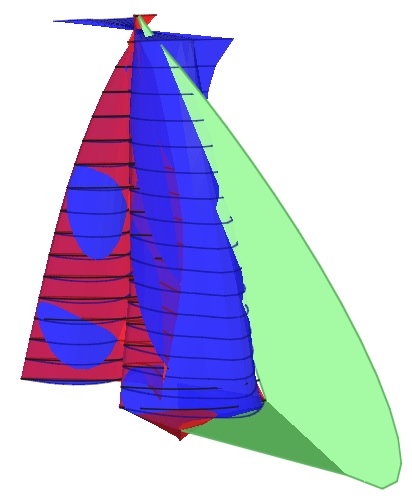
Class Jibs:
Lightwave Platinum Membrane
Surface type: Filament Array
Yarn type: Carbon / Black Aramid
J1: Wind range – 0 – 8 kts tws
J2: Wind range – 6 – 18 kts tws
J3: Wind range – 16 – 28 kts tws
Standard Features
- Double zip deck launch bag
- Vectran leech and foot lines
- Trim stripes
- Laminated patches
- Glass tapered battens
- Tell tales
- Race measurement
- Spreader and stanchion patches
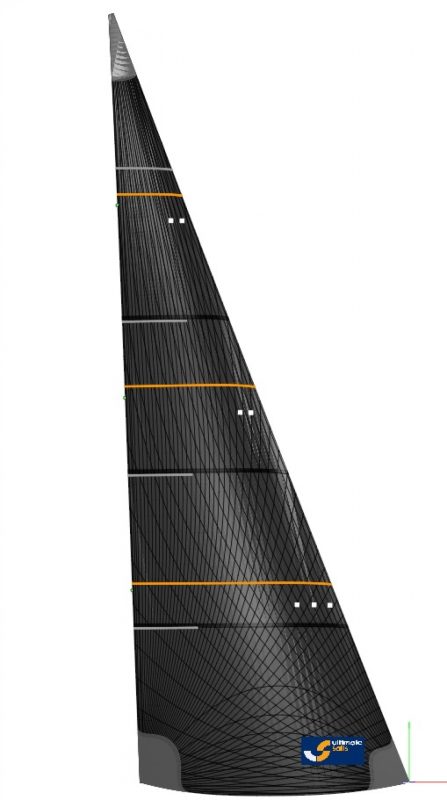
Asymmetric
The biggest change in sail design during the life of the class has undoubtedly been in the downwind sails. Class racing has always been about having a sail that allows you to sail deeper and ideally faster with increased VMG. Ultimate Sails designs are very stable and can be rolled well to windward to allow you to sail deeper angles. This combined with maximum twist in the top leech to increase acceleration results in great all round sails which have consistently proved to be faster than the competition.
Class Code A1
Construction type: Tri optimal
Material:0.6oz Nylon
Apparent wind angle range: 60 – 140 deg
Apparent wind speed range: 0 – 8 kts
Standard Features
- Sail numbers
- Deck launch bag
- Vectran Luff line
- Race measurement

Class Code A2
Construction type: Tri optimal
Material: 0.9oz Nylon
Apparent wind angle range: 100 – 160 deg
Apparent wind speed range: 7 – 13 kts
Standard Features
- Sail numbers
- Deck launch bag
- Vectran Luff line
- Race measurement
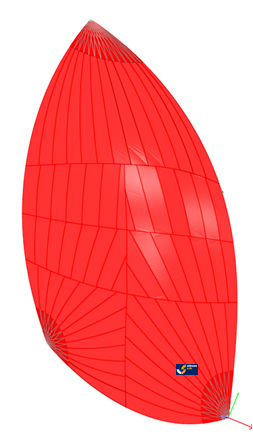
Class Code A4
Construction type: Tri optimal
Material: 1.5oz Nylon
Apparent wind angle range: 50 – 140 deg
Apparent wind speed range: 10 – 18 kts
Standard Features
- Sail numbers
- Deck launch bag
- Vectran Luff line
- Trim stripes
- Race measurement
- Tack prodder
- Take down patches
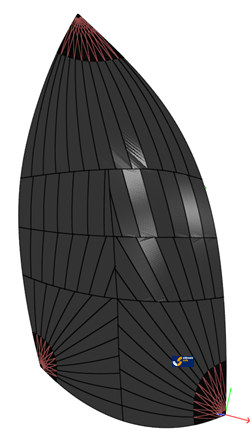
Cruising, Racing and
Lightwave Endurance Sails
Online Instant Quote Generator
No pressure. No obligations. Instant

